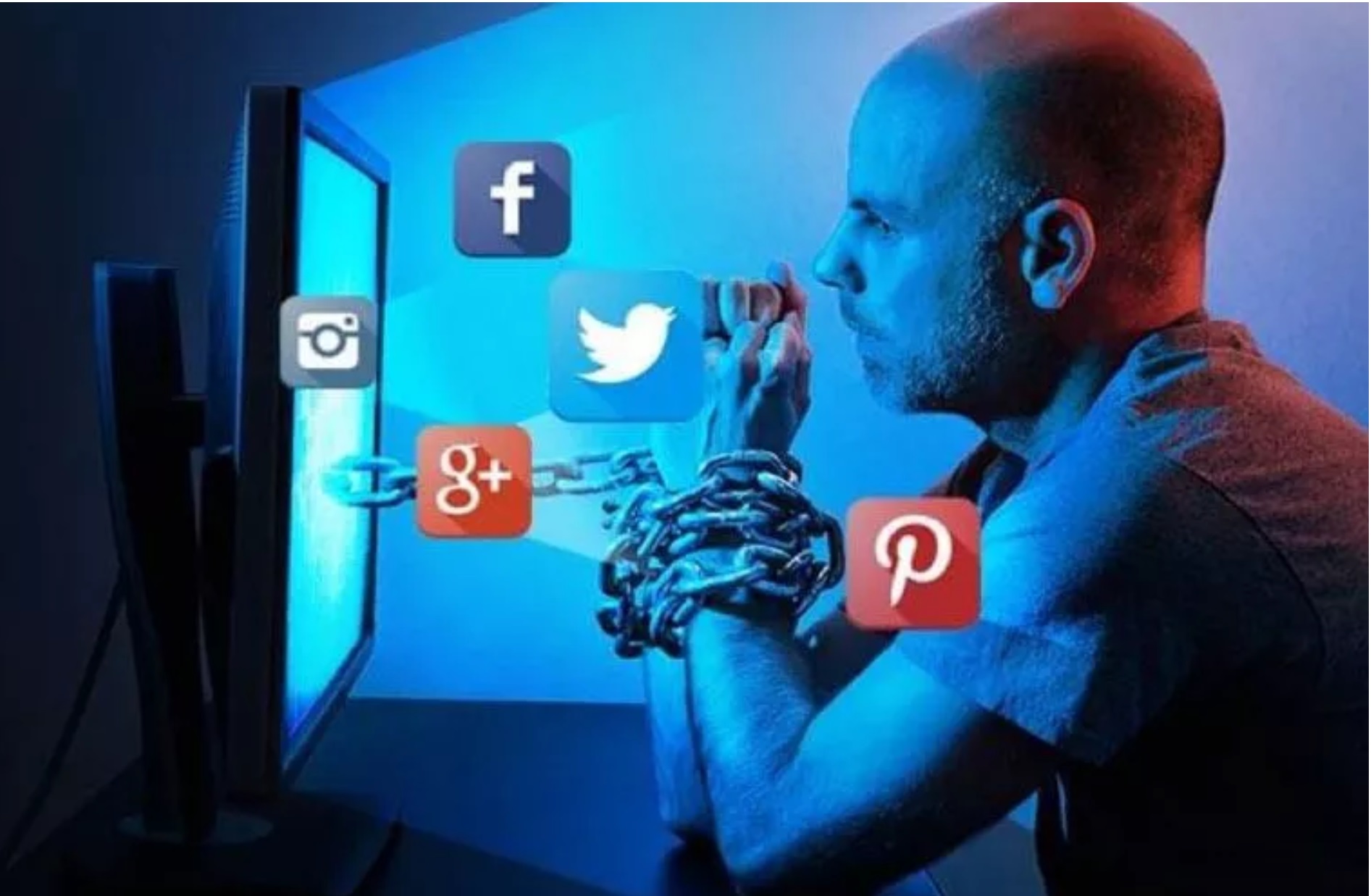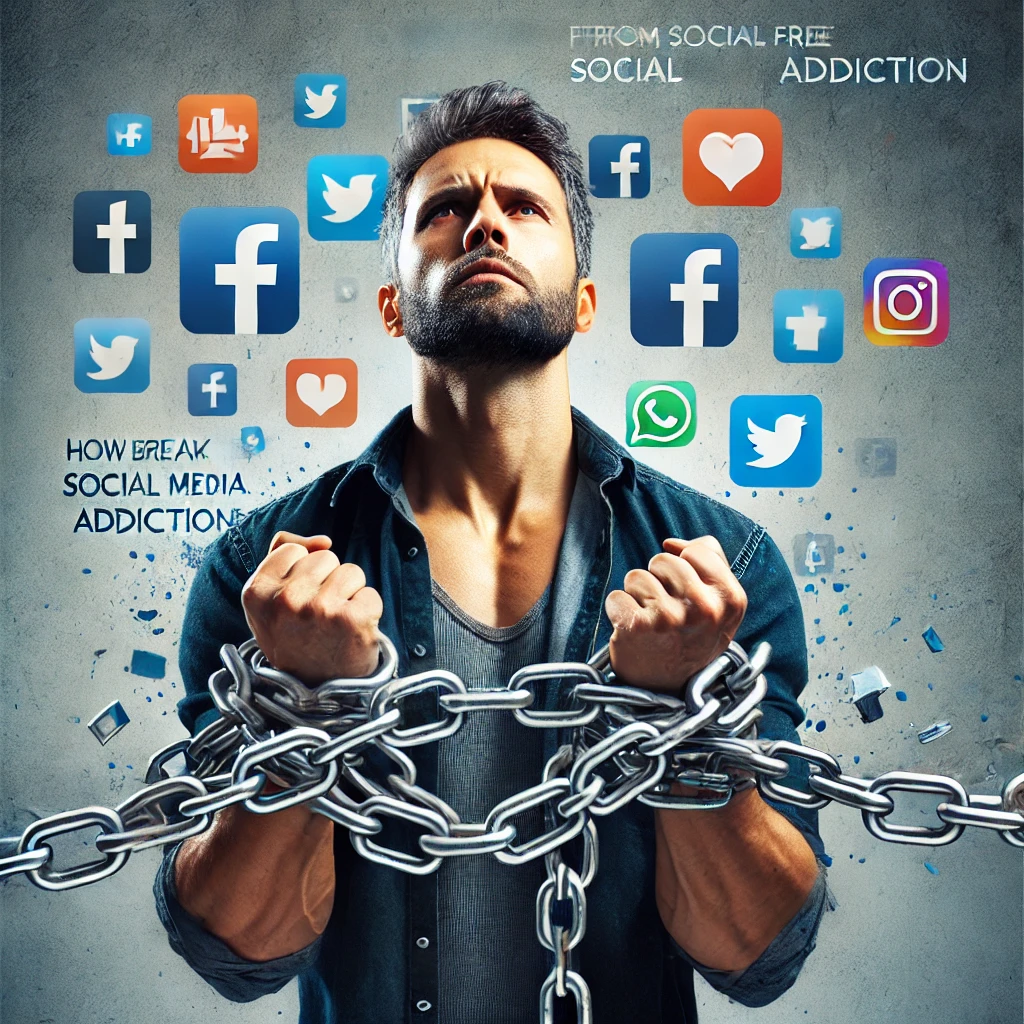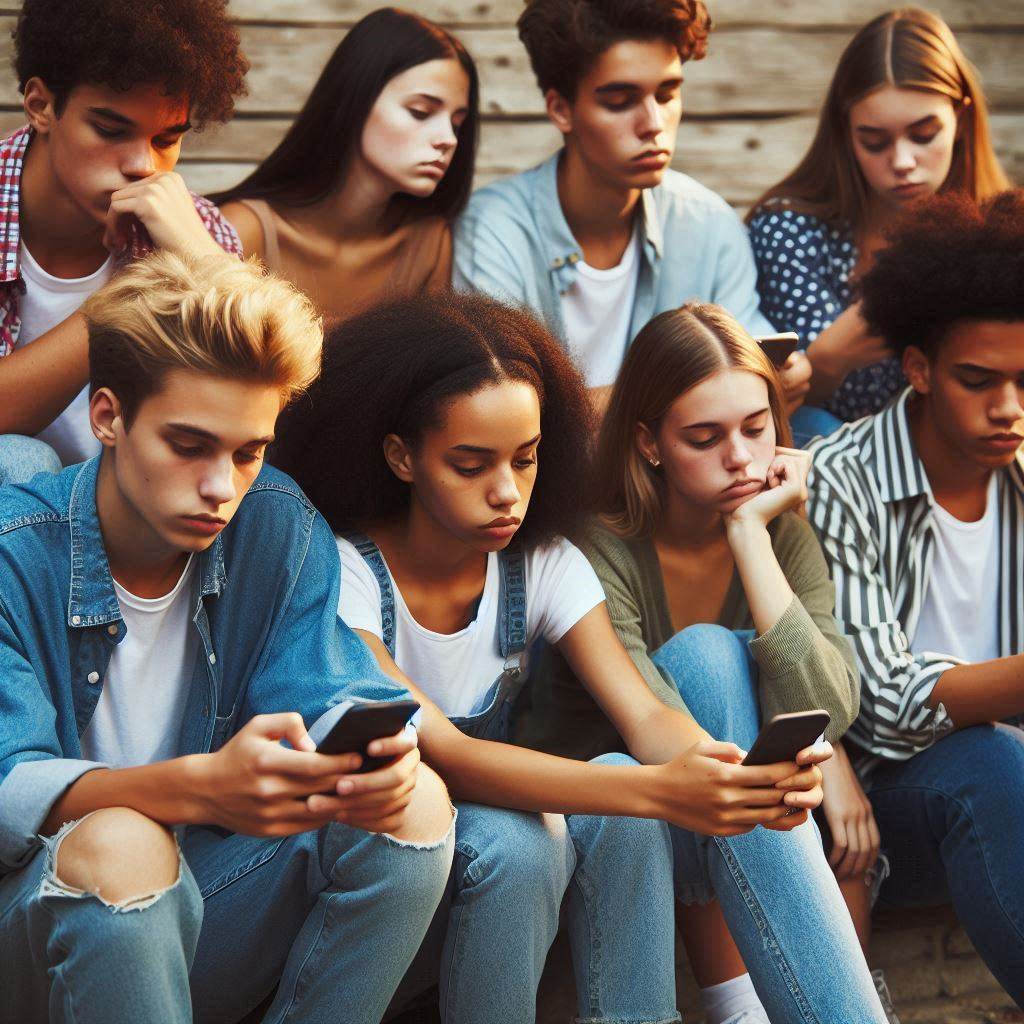A 7-Step Guide to Breaking Free from Social Media Addiction
In today’s digital age, social media has become an integral part of our lives, offering countless opportunities for connection, entertainment, and information. However, for some individuals, this constant engagement with social media can turn into an addiction, leading to negative effects on their mental health, relationships, and overall well-being. Recognizing the impact of social media addiction is the first step towards breaking free from its grip. In this guide, we will explore a comprehensive seven-step approach to help you regain control over your social media usage, establish healthier habits, and achieve a more balanced relationship with the digital world. By following these steps, you can reclaim your time, focus, and mental space, ultimately leading to a happier and more fulfilling life offline.
Understanding the Impact of Social Media Addiction
Social media has become an integral part of our lives, and while it has its perks—connecting with old friends, sharing cute cat videos—it can also take a toll on our mental health. Social media addiction is a real thing, and its consequences can be far-reaching. From feelings of anxiety and low self-esteem to decreased productivity and disrupted sleep patterns, the impact of social media addiction is no joke. But fear not, dear reader, for we have a 7-step guide to help you break free from the clutches of this digital vice. So, put down your phone and let’s get started!
Step 1: Acknowledge and Recognize the Problem
Recognizing the Signs of Social Media Addiction
We’ve all been guilty of mindlessly scrolling through our feeds or experiencing a Pavlovian response to the notification ding. But when social media begins to dominate our thoughts, actions, and emotions, it’s time to take a step back and assess if we have a problem. Are you constantly checking your phone for updates? Do you find it difficult to concentrate on tasks without reaching for your device? Recognizing these signs can be the first step towards breaking free from the grips of social media addiction.
The Impact of Social Media Addiction on Mental Health
It’s essential to understand the toll social media addiction can take on our mental health. Studies have shown a correlation between excessive social media use and increased feelings of loneliness, depression, and anxiety. The endless stream of curated highlight reels can make us feel inadequate and lead to a constant need for validation. By acknowledging the impact of social media addiction on our mental well-being, we can begin to take proactive steps to reclaim our lives.
Step 2: Set Clear Goals and Intentions
Identifying Your Reasons for Breaking Free
Why do you want to break free from social media addiction? Is it to spend more quality time with loved ones? Improve focus and productivity? Or simply regain control over your own thoughts and actions? Identifying your reasons will help you stay motivated throughout your journey and remind you of the benefits waiting on the other side.
Establishing Realistic and Specific Goals
Setting clear goals is crucial when embarking on any endeavor. Be realistic about what you hope to achieve. Instead of swearing off social media altogether, start with small, achievable goals like limiting your screen time or designating specific times for social media usage. By establishing specific and measurable goals, you set yourself up for success and avoid becoming overwhelmed.
Step 3: Create a Healthy Digital Detox Plan
Assessing Your Current Social Media Usage
Before diving headfirst into a digital detox, take a moment to assess your current social media habits. How many hours per day do you spend scrolling mindlessly? Which apps or platforms consume the most of your time? Understanding your usage patterns will help you identify problem areas and make informed decisions about which changes to make.
Designing a Personalized Detox Plan
Now comes the fun part—creating a personalized detox plan! Tailor your plan to your goals and lifestyle. Whether it’s scheduling screen-free breaks throughout the day, disabling certain notifications, or even deleting certain apps altogether, make sure your plan is realistic and suits your individual needs. Remember, this isn’t about deprivation but rather finding a healthier balance between the digital and real world. So, get creative and design a plan that works for you.
With these first three steps, you’re well on your way to breaking free from the clutches of social media addiction. Stay tuned for the next installment of our 7-step guide, where we delve deeper into the remaining steps towards achieving a healthier relationship with social media. Until then, resist the urge to Google cute cat videos, and remember, life is just as adorable offline!
Step 4: Develop Alternative Habits and Hobbies
Offline Activities to Replace Social Media, Get a Hobby!
So, you’ve decided to break free from your social media addiction. Now what? Well, it’s time to venture into the realm of offline activities. Remember those things we used to do before we had a smartphone glued to our hands? Yeah, those things, like camping, hunting or archery.
Consider picking up a hobby or activity that doesn’t involve staring at a screen. Maybe it’s painting, playing an instrument, hiking, or even joining a local sports team. The options are endless! By engaging in these activities, you not only distract yourself from the urge to scroll through feeds, but you also discover new passions and interests that can bring you genuine joy.
Discovering New Interests and Passions
While you’re exploring offline activities, keep an open mind and embrace the opportunity to discover new interests and passions. Use this time away from social media to reconnect with yourself and figure out what truly excites you. Maybe you’ll find a love for photography, learn to cook delicious meals, or finally tackle that DIY project you’ve been avoiding.
The beauty of breaking free from social media addiction is that you have the chance to fill your life with meaningful experiences and interests that align with your true self. So go ahead, dive into these new adventures and see where they take you!
Step 5: Establish Boundaries and Limits
Setting Time Restrictions for Social Media Usage
Boundaries are essential when it comes to overcoming social media addiction. Start by setting specific time limits for yourself. Decide how much time you’re comfortable spending on social media each day and stick to it. Now, remember, be realistic. Quitting cold turkey might sound appealing, but it’s not always practical. Gradually reduce your usage until you reach a sustainable level.
Creating Physical and Digital Boundaries
In addition to time restrictions, it’s important to create physical and digital boundaries. Designate tech-free zones in your home, like the bedroom or dining area, to encourage more face-to-face interactions. Keep your phone out of reach during certain activities or periods of the day when you want to focus on being present. And don’t forget to turn off those pesky notifications that constantly tempt you to check your social media accounts.
Setting boundaries will not only help you regain control over your social media usage but also allow you to prioritize other aspects of your life.
Step 6: Seek Support and Accountability
Enlisting the Help of Friends and Family
Breaking free from social media addiction is much easier when you have support from those around you. Let your friends and family know about your goals and ask them to hold you accountable. They can help remind you to stay off social media during designated times or engage in activities together that don’t involve screens. Plus, it’s always more fun to conquer challenges when you have a team behind you!
Joining Support Groups or Online Communities
If you feel like you need additional support, consider joining support groups or online communities dedicated to overcoming social media addiction, like Internet and Technology Addicts Anonymous. Here you’ll find like-minded individuals who understand the struggles and can provide encouragement and practical tips. It’s comforting to know you’re not alone in this journey, and these communities can be great sources of motivation and inspiration.
Step 7: Embrace a Balanced Relationship with Social Media
Cultivating Mindful and Purposeful Social Media Use
Now that you’ve made progress in breaking free from social media addiction, it’s time to cultivate a healthier relationship with it. Rather than mindlessly scrolling for hours on end, practice mindful and purposeful social media use. Set intentions before logging in, such as connecting with friends, seeking inspiration, or gaining knowledge. Limit your time spent on each platform and be aware of how it affects your mood and well-being.
Finding a Healthy Balance between Online and Offline Life
Finally, it’s crucial to find a healthy balance between your online and offline life. Remember that social media is just one aspect of your existence, not the entire world. Allocate time for activities that bring you joy, foster real relationships, and allow you to fully engage with the present moment. By embracing this balance, you’ll experience a more fulfilling and well-rounded life, free from the chains of social media addiction.In conclusion, breaking free from social media addiction is a journey that requires self-awareness, dedication, and perseverance. By acknowledging the problem, setting clear goals, creating a digital detox plan, developing alternative habits, establishing boundaries, seeking support, and embracing a balanced relationship with social media, you can regain control over your life and prioritize your well-being. Remember, it’s okay to take breaks, disconnect, and focus on the present moment. By implementing these steps, you can cultivate a healthier relationship with social media and experience a newfound sense of freedom and fulfillment in your life. So take the first step today and embark on a journey towards breaking free from social media addiction.





